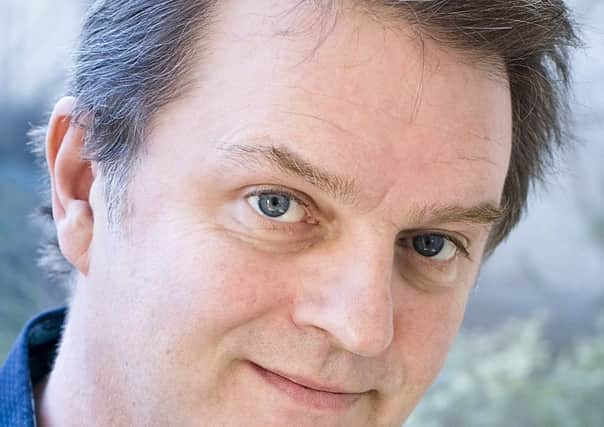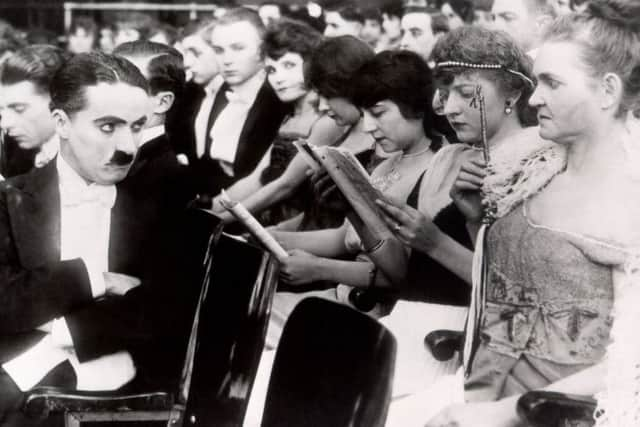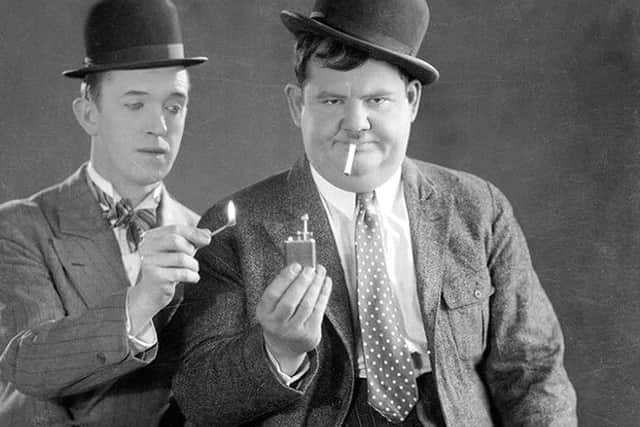Paul Merton makes a big noise about the age of silent comedy


The list of famous names to have graced the stage at the City Varieties is as long as it is illustrious.
Charlie Chaplin, Houdini and Morecambe and Wise are among the luminaries to have appeared at the famous music hall in Leeds over the years, and such is the venue’s rich history that three of the four Hollywood icons whose movies Paul Merton has chosen for this year’s Yorkshire Silent Film Festival performed at the City Varieties at one time or another.
Advertisement
Hide AdAdvertisement
Hide Ad“Charlie Chaplin appeared there when he was about 10 years old in a clog dancing act, and Laurel and Hardy played there some time in the 50s,” says Merton.


“The stage at the City Varieties has a steep slope on it and there’s an interview with Buster Keaton in which he’s talking to his wife and says ‘where was it that we fell off the stage?’ and she says, ‘oh that was Leeds.’”
Merton is a huge fan of the early days of Hollywood and opens the festival at the Varieties next week by presenting a night of slapstick comedy films featuring Laurel and Hardy, Charlie Chaplin, Buster Keaton and Harold Lloyd.
The screenings feature Neil Brand on piano and will get the festival, which runs throughout May with screenings and events across Yorkshire, off to a grandstand start.
Advertisement
Hide AdAdvertisement
Hide AdComedian and writer Merton, best known as a team captain on the panel show Have I Got News For View, was fascinated by the silent films from an early age, so what piqued his curiosity? “It was about 50 years ago and there was a programme on TV called The Golden Silence that was hosted by Michael Bentine on BBC One, and it showed Chaplin and Buster Keaton.


“I was probably about 10 and I was interested in all forms of comedy whether it was The Goon Show on radio, or Hancock on TV. The thing with silent films was you could buy a standard projector, which I had, and you could get Chaplin and Keaton films quite easily and you could watch a film projected onto your bedroom wall.
“One of the films I’m showing at the City Varieties is the film Cops, a Buster Keaton film. I watched it again recently having not seen it for years and I still knew every single frame because I was obsessed with watching this stuff as a kid.”
He’s looking forward to playing the films accompanied by live music in front of the audience. “The minute you introduce live music and a live audience it becomes such a joy, and I think the best of the films from this era are as potent today as they ever were.”
Advertisement
Hide AdAdvertisement
Hide AdThe music has to be right, though, as Merton points out. “I attended a screening of a Chaplin short film outside the grounds of the Imperial War Museum in London about ten years ago with music that I think was described as ‘drum n bass’ and it was just appalling... It would have been better to have the ambient sounds of Kensington.”


But when you get it right it becomes a joyous experience. “The music just has to be sympathetic to the film. It’s not an exercise in nostalgia and you don’t have to make allowances for the film. The only allowances you have to make is if you look away from the screen the film doesn’t exist because it doesn’t have a soundtrack so you have to concentrate. It’s a bit like radio in that you have to bring something to it,” he says.
“There’s a pace and zest to silent films. Sometimes the films are speeded a little by the film-maker to give it an extra zip, and people are often surprised how good some of these films actually are.”
To begin with they were pretty rudimentary. “When cinema started in 1895 the first public showings were in Paris. The first films were shot by the Lumiere brothers and it would be a train arriving in a station, or a baby crying in a pram, and these were about 30 seconds long.
Advertisement
Hide AdAdvertisement
Hide Ad“The Lumiere brothers didn’t really know what this invention was going to be used for and one thought they had was that it might be used by surgeons to film an operation which could be shown to other doctors.”


It took several years before it came to be seen as a form of entertainment.
“By the time Chaplin became involved the films were very basic and his early Keystone [Studios] films were usually shot in three or four days and sometimes in an afternoon, because they weren’t expected to last more than a week.”
Silent films were popular among immigrant populations, particularly in the US, because there wasn’t a language barrier to contend with. “They were easy to understand. The man in the big white hat was the hero or the person firing the gun was the villain, the stories weren’t very complex and you might go to the cinema three or four times a week and you’d expect to see a different film each time.”
Advertisement
Hide AdAdvertisement
Hide AdChaplin was one of the first to see that it could be turned into an art form. “There’s a famous Chaplin clip from the film called The Tramp where he’s walking away from the camera down a dusty road and he’s downhearted because of what’s happened in the film and then he kicks his heels and shrugs his shoulders in a gesture of optimism and carries on down the road.
“This really affected people. To be able to put across that emotion and to move people without any sound was remarkable.
“You watch it even now and you feel like cheering at the end as he heads off towards a more optimistic future.
“Chaplin was able to engender these kinds of reactions from audiences that just ten years earlier had been laughing at shadows and images moving around on a bedsheet.”
Advertisement
Hide AdAdvertisement
Hide AdKeaton was another of the early pioneers. “He was a huge Chaplin fan and he performed the most extraordinary falls and in the film Cops there’s one scene where he runs towards the camera and turns his back, puts his hand out and a passing car pulls him out of the frame by his arm, and it’s an astonishing moment because you know it’s not been faked.”
Merton believes the humour hasn’t dated.
“There’s a Laurel and Hardy one I’m showing that has some huge laughs.
“If you see a modern film and there’s a big laugh in it sometimes you might miss the next bit of dialogue but with these films because there’s no sound the laughter can keep rolling and it’s the pictures telling you the story rather than the dialogue,” he says.
“These were also great comedians, particularly in the case of Keaton and Chaplin and Stan Laurel, who were on stage from a very early age and they were used to performing in front of a live audience.
Advertisement
Hide AdAdvertisement
Hide Ad“When Charlie Chaplin was on stage at the City Varieties as a 10-year-old he would have seen other acts like a soprano a juggling act or an acrobat, or someone with a dancing bear and he would have been inspired by the timing of a juggler rather than a comedian.”
The Artist came out a few years ago to great acclaim which suggests there is a renewed appetite for silent movies.
“Some of the films I’m showing are over a hundred years old or coming up to their centenary, but they have to still work for an audience today.
“You’re looking at a world that no longer exists; the cars and streets are different, the clothes and hairstyles are different, so it’s a way of looking back at history,” says Merton.
Advertisement
Hide AdAdvertisement
Hide Ad“Hitchcock used to always say that cinema is basically pictures, it’s not words or dialogue, that should tell the story and I think that’s what makes the silent movies work.”
Paul Merton’s Silent Clowns, City Varieties, Leeds, Tuesday May 8, 7.30pm. www.cityvarieties.
A treat for silent movie buffs
The Yorkshire Silent Film Festival 2018 runs from May 8 to 27 and is the UK’s largest celebration of live-scored silent film and takes place in cinemas, theatres and community venues across the region.
The festival, which first started in 2016, features 40 events and each one will feature live musical performances by some of the world’s leading specialist film musicians.
Advertisement
Hide AdAdvertisement
Hide AdThis year’s festival takes place in Hebden Bridge, Holmfirth, Huddersfield, Hull, Leeds, Leyburn, Marsden, Scarborough, Settle, Sheffield, Thirsk, Ossett and York.
Paul Merton’s Silent Clowns at the City Varieties, May 8, 7.30pm. Tickets cost £18.60. Call 0113 243 0808, or go to www.ysff.co.uk
For more details about the festival go to www.ysff.co.uk